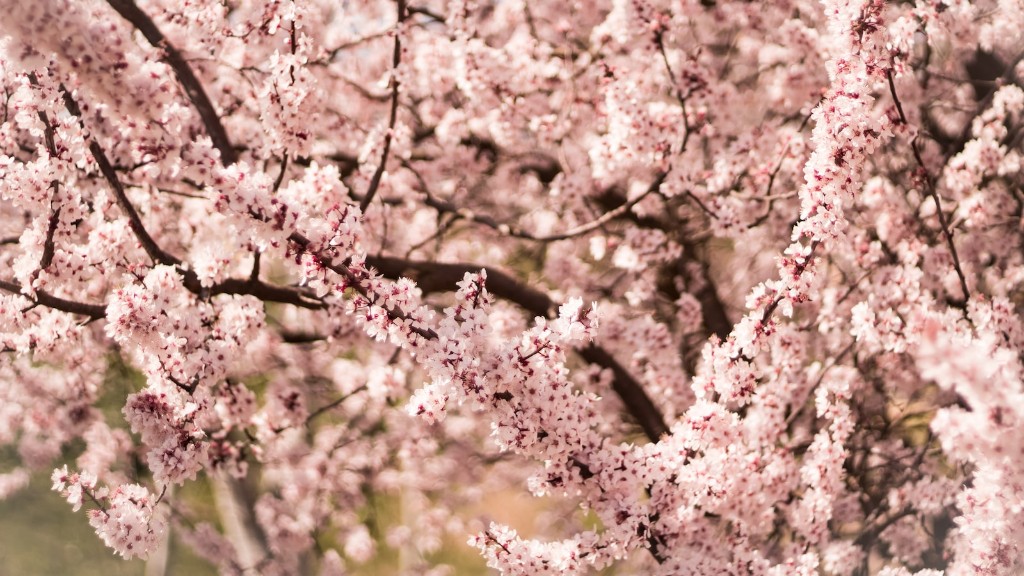Apple Tree Pruning Techniques
Apple trees require regular pruning to keep them in healthy condition and to avoid overgrowth and potential hazard. Pruning is carried out with the aim of removing any dead, diseased or weak branches, while also shaping the tree and encouraging better fruit production. To save an apple tree, proper pruning techniques must be employed. The two main types of pruning are crown reduction and crown thinning. Crown reduction involves reducing the size of the tree by shortening the longest branches and maintaining the overall shape and form of the tree. Crown thinning, on the other hand, involves removing secondary branches that are thinner and lighter in weight to allow for more circulation of light, air and nutrients. Both techniques should be carried out in the dormant season when the trees are not in bloom.
Effective use of Fertilizers
Appropriate fertilizers should be used to stimulate growth and help to protect the apples from diseases. Granular fertilizers are usually applied at the base of the tree, around the root flaring, in late winter and once again in early fall. Alternatively, fertilizers can be administered through drip irrigation systems, using a nutrient solution. To get the most out of the fertilizer, mulch should also be applied around the tree base roughly one to two inches deep. This will help to preserve moisture in the soil and provide additional nutrients.
Protecting Trees from Pests and Diseases
To save an apple tree, pest and disease control is of the utmost importance. Insect pests should be monitored regularly, and any signs of infestation addressed with the use of appropriate sprays and granular pesticides. Similarly, any signs of disease should be treated promptly. If a disease is widespread, the tree may need to be destroyed and replaced, as this is the most effective way of preventing the spread of the disease.
Other Helpful Care and Management Practices
In addition to pruning, fertilizing and pest/disease control, other good maintenance practices can help to save an apple tree. Important actions are to water the tree during times of drought, control weeds and maintain soil fertility. This is essential, as an unhealthy soil can weaken the tree and lead to significant problems. Trees should also be regularly inspected for broken and decayed branches, which should be removed.
Pruning During Frost Seasons
As mentioned above, pruning is a vital part of apple tree care. However, pruning should not be carried out during periods of extreme cold or during frost seasons. The reason for this is that freshly cut deadwood and sap can further damage the tree, on top of the damage that may have been caused by the frost. Pruning should also be avoided during the hot summer months except for removing dead or diseased fruit and branches, as the intense heat can cause further damage to the tree.
What to do with Cuts from Pruning
When pruning an apple tree, it is advised to keep both lives and deadwood together. This is to ensure that the tree is still structurally sound and will not become unbalanced in its shape or growth. Any cuts should be disposed of carefully and not kept near the tree in order to avoid the spread of disease. Keeping the tree clean and free from debris, such as dead leaves, is also important in order to keep the risk of diseases and pests at a minimum.
Mulching Techniques
Mulching is an integral part of apple tree care and can greatly benefit their health. It helps to reduce soil temperatures in the summer and retain moisture in the winter, which can assist in the prevention of diseases. A layer of organic mulch should be added around the base of the tree in a three foot radius. This will protect the tree from excess moisture, weeds, and soil run-off, leading to healthier root systems and a longer lifespan for the tree.
Fertilizer Application Strategies
The application of appropriate fertilizers on an apple tree is essential for its growth, health and longevity. Broad Spectrum Micronutrient Fertilizers should be used and an appropriate dose should be chosen, depending on the size, age and condition of the tree. Fertilizers should be applied at ground level, around the root zone, making sure that they are not in direct contact with the trunk of the tree. It is also helpful to fertilize trees during times of dormancy as this will provide them with the necessary nutrients to prepare for growth again in spring.
Insect Infestation Prevention Tips
Insect infestation on apple trees can cause a variety of problems, such as weak fruits and discoloration. In order to prevent such occurrences, insecticides need to be applied to the tree. The most effective insecticides for controlling apple tree infestation are Sulfur Insecticides, which target key pests, such as Whiteflies and Aphids. Alternatively, Beneficial Insects, such as Ladybugs, can be released onto the tree, as these will help to control the population of pests. Chemical insecticides should be applied at the correct dosage and during the correct time of the year.


